|
| |
Order Neuroptera
- This page contains pictures and information about Golden Eye Green Lacewings
that
we found in the Brisbane area, Queensland, Australia.
-

- Body length 20mm
-
- Green Lacewings are small in size. Adults are bright green in
colour with clear wings and long thread-like antennae. They have relatively large,
golden, iridescent eyes. They are active at night and may come to house attracted
by
window light.
-
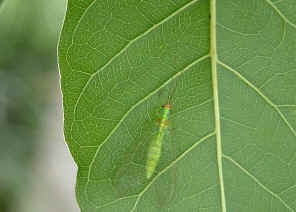 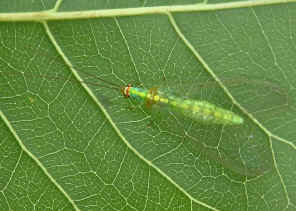

-
- Green Lacewings are common in Brisbane. There are many different species
look similar, i.e., most of them are pale green with clear wings and about the
same size. Hard to identify to species level by looking at the photos.
-
 

-
Eggs and Larvae
-
Eggs and Larvae of Golden Eye Green Lacewings of different species.
-
-

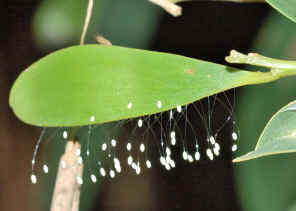

- The stalked eggs
-
 -
- Females lay eggs in group. Notice that the eggs are laid on thin sticks. Lacewing
larvae are active predators. Most of them have long mandibles. Eggs laid on
thin sticks is believed that it helps to prevent cannibalism.
-
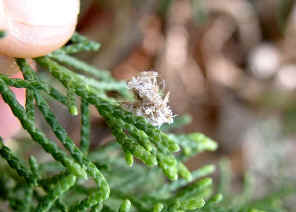 

-
- Larvae in other species are predators hunting on stems and on leaves. They
have very long mandibles. Some of them may be covered with prey body or other
plant litters on body.
-



-
- We found the above Lacewings Larvae hunting the aphids in our
backyard in spring.
-
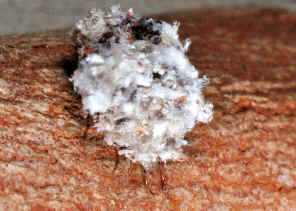

-
- Reference:
- 1. Insects
of Australia, CSIRO, Division of Entomology, Melbourne University
Press, 2nd Edition 1991, p 539.
- 2. Insects of Australia and New Zealand - R. J. Tillyard, Angus &
Robertson, Ltd, Sydney, 1926, p318.
- 3. Wildlife
of greater Brisbane - Queensland Museum, p98.
- 4. A revision of the Australian Chrysopidae (Insecta: Neuroptera) -
TR New 1980, Aust. J. Zool. Suppl. 77: 1-143
- 5. Lacewings - Queensland Museum, 2011.
- 6. Northern
Territory Insects, A Comprehensive Guide CD - Graham Brown, 2009.
[ Up ]
| |
|



















